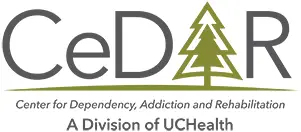MENTAL HEALTH & ADDICTION
This article looks at the necessary features for a bipolar diagnosis. It is useful if you or a family member have confusion about this condition.
Bipolar disorder is historically called “manic-depressive.” It’s a primary mood disorder characterized by robust and often destructive emotional states over different periods of time. This condition is a common diagnosis with our patients at CeDAR prior to admission. Sometimes the diagnosis is accurate, but sometimes it’s in error. How do we know the difference?
The Biological Reality
It is important to remember that bipolar disorder is primarily a biological condition involving disruptions in brain chemistry. This also means that it responds to medication approaches. The most studied psychotherapy for bipolar disorder emphasizes good self-care, medication adherence and attention to sleep patterns and stimulation. This therapy is very different than other forms of treatment that focus on insight-building and coping skills.
Bipolar disorder can exist in 3 overall phases:
- Mania
- Depression
- Maintenance
Phases of Bipolar
A manic phase involves excessive dopamine in the brain, not unlike that experienced by cocaine or amphetamine use. This dopamine surge leads to symptoms of increased energy, distractibility, emotional volatility, euphoria, prolonged insomnia, and distorted judgment. A manic person may exhaust his or her savings account quickly or strange conflicts at the grocery store may get them arrested
The depressive phase of bipolar disorder is similar to that of classical depression. Our approach to treatment is the only difference during this phase. We are likely to use different medications to help someone experiencing bipolar-depression as compared to standard ‘major depressive disorder.’
The maintenance phase of bipolar disorder is where the symptoms have settled down. Medications prescribed during this phase protect against either mania or depression returning.
Age of Diagnosis
It is also important to know that bipolar disorder tends to be a diagnosis of the 20’s. If someone does not experience a severe depressive or manic period over these years and instead encounters problems in the late 30’s or 40’s, the diagnosis can likely be something other than bipolar disorder.
We try to make a bipolar diagnosis during periods of general sobriety. This is because severe drug use can often present similarly to that of mania. It does get more complicated, though, in that patients who have actual bipolar disorder are about 11 times more likely to also have an addiction than the general population.
It’s important to be cautious and sensible when working with your doctor around the prospect of having bipolar disorder because the medications are strong with serious potential side effects. It would be a mistake to make a bipolar diagnosis in haste without a detailed overall history. At CeDAR, we recommend taking a thoughtful approach around bipolar, using effective medications while paying good attention to side effects, and integrating recovery from bipolar with overall substance recovery.
Read more CeDAR Education Articles about Mental Health & Addiction
